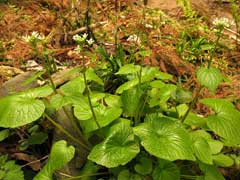 |
|
http://commons.wikimedia.org/wiki/User:Qwert1234 |
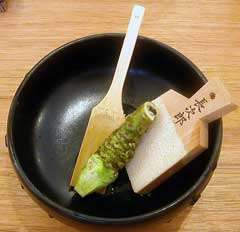 |
|
Translate this page:
Summary
UPDATE 12/09/2011: This name is a synonym of Eutrema japonicum (Miq.) Koidz..
Physical Characteristics

 Wasabia japonica is a PERENNIAL growing to 0.3 m (1ft) by 0.2 m (0ft 8in).
Wasabia japonica is a PERENNIAL growing to 0.3 m (1ft) by 0.2 m (0ft 8in).
See above for USDA hardiness. It is hardy to UK zone 8. It is in flower from April to May. The species is hermaphrodite (has both male and female organs).
Suitable for: light (sandy), medium (loamy) and heavy (clay) soils. Suitable pH: mildly acid, neutral and basic (mildly alkaline) soils. It can grow in semi-shade (light woodland) or no shade. It prefers wet soil and can grow in water.
UK Hardiness Map
US Hardiness Map
Synonyms
Eutrema wasabi.
Plant Habitats
Pond; Bog Garden;
Edible Uses
Edible Parts: Leaves Root
Edible Uses: Condiment
Root - a horseradish substitute[2, 46, 58, 61, 105]. The fleshy rhizomes are finely grated and prepared into an attractive fresh green paste which is much used as a condiment in Japan[183]. It is considered to have a distinct flavour and pungency that is superior to horseradish, Armoracia rusticana[183]. The pungency rapidly deteriorates once the root has been cut[200]. Roots of plants 15 - 24 months old are best[238]. Leaves, flowers and petioles - cooked[105, 179, 200]. The leaves, flowers, leafstalks and freshly sliced rhizome are soaked in salt water and then mixed with saki lees to make a popular Japanese pickle called 'wasabi-zuke'[183]. The following analysis is said to belong to the leaves but it looks more like a root analysis[K]. The leaves contain about 6.1% protein, 0.2% fat, 22.3% carbohydrate, 1.3% ash[179].
References More on Edible Uses
Medicinal Uses
Plants For A Future can not take any responsibility for any adverse effects from the use of plants. Always seek advice from a professional before using a plant medicinally.
Digestive
The root is a pungent warming herb that stimulates the digestion[238]. It is used internally as an antidote to fish poison[238]. (This probably refers to food poisoning caused by eating fish[K]).
References More on Medicinal Uses
The Bookshop: Edible Plant Books
Our Latest books on Perennial Plants For Food Forests and Permaculture Gardens in paperback or digital formats.
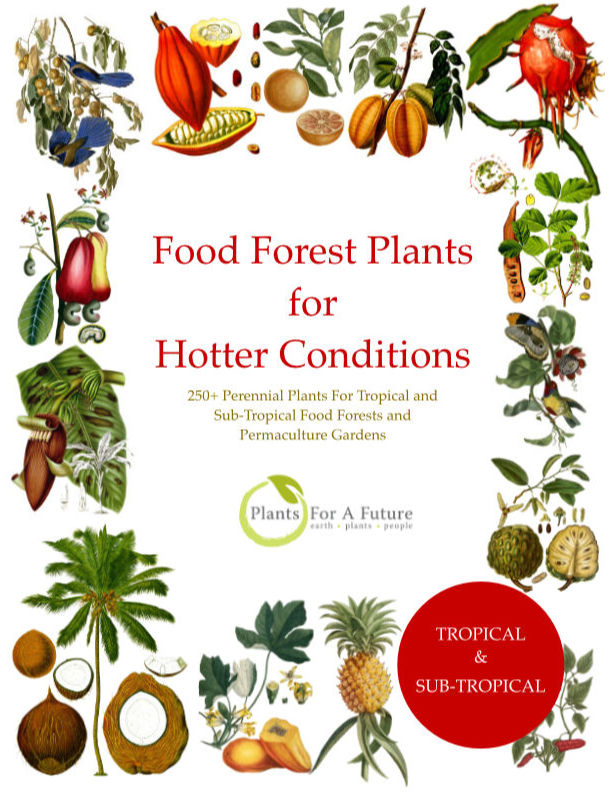
Edible Tropical Plants
Food Forest Plants for Hotter Conditions: 250+ Plants For Tropical Food Forests & Permaculture Gardens.
More
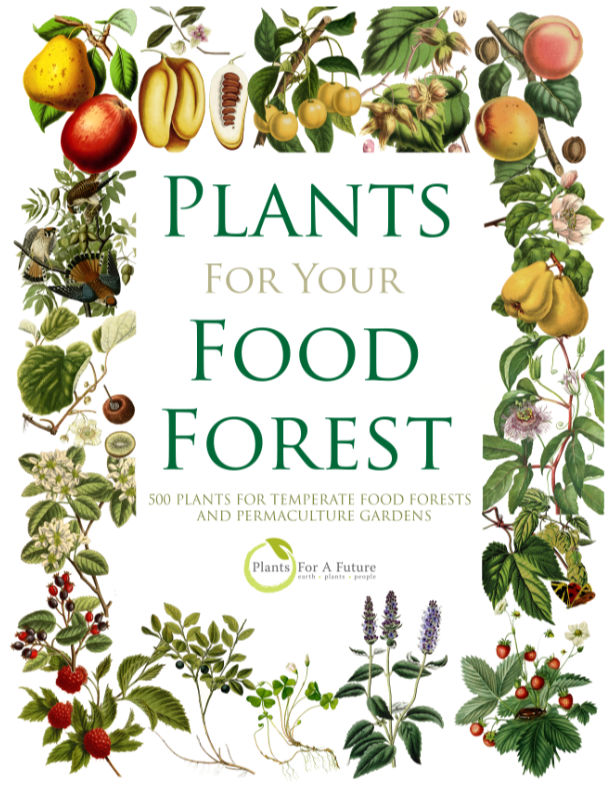
Edible Temperate Plants
Plants for Your Food Forest: 500 Plants for Temperate Food Forests & Permaculture Gardens.
More
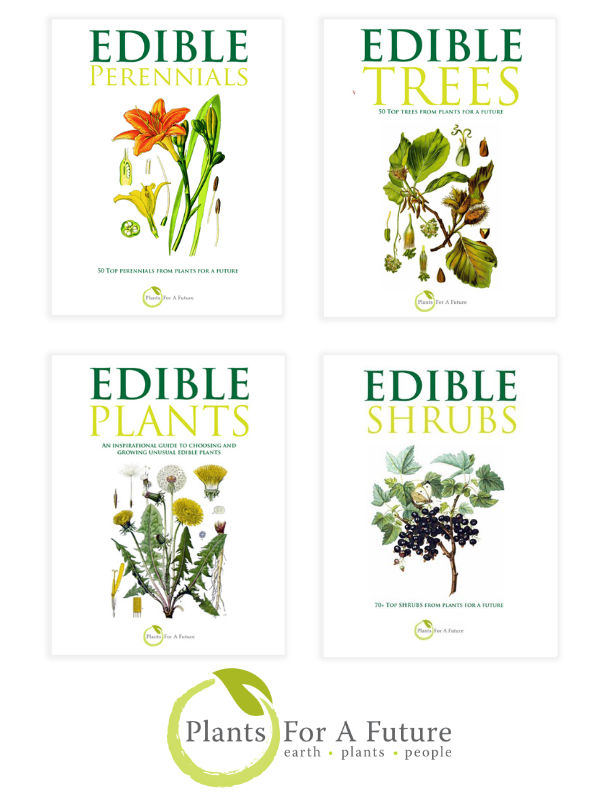
More Books
PFAF have eight books available in paperback and digital formats. Browse the shop for more information.
Shop Now
Other Uses
References More on Other Uses
Cultivation details
Prefers a position in wet soil or shallow water. The best quality roots are produced from plants growing in semi-shade in clear running spring water at a temperature between 11 - 14°c[200]. This species is cultivated in eastern Asia for its edible root which is used in much the same way as horseradish[58], it takes 3 - 5 years to produce marketable roots[116]. The roots are finger-thick and up to 18cm long[206].
References Carbon Farming Information and Carbon Sequestration Information
Temperature Converter
Type a value in the Celsius field to convert the value to Fahrenheit:
Fahrenheit:
The PFAF Bookshop
Plants For A Future have a number of books available in paperback and digital form. Book titles include Edible Plants, Edible Perennials, Edible Trees,Edible Shrubs, Woodland Gardening, and Temperate Food Forest Plants. Our new book is Food Forest Plants For Hotter Conditions (Tropical and Sub-Tropical).
Shop Now
Plant Propagation
Seed - sow spring in a greenhouse and keep the seed permanently moist[238]. Prick out the seedlings into individual pots when they are large enough to handle and grow them on in the greenhouse for their first year. Stand the pots in shallow water to ensure the plants do not dry out. Plant them out in late spring or early summer. Division in spring as the plant comes into growth. Very easy, the larger divisions can be planted out direct into their permanent positions. We have found that it is best to pot up smaller divisions and grow them on in light shade in a greenhouse or cold frame until they are growing away well. Plant them out in the summer or the following spring.
Other Names
If available other names are mentioned here
Native Range
TEMPERATE ASIA: Russian Federation (Sakhalin), Korea, Japan (Hokkaidô, Honshu, Kyushu, Shikoku)
Weed Potential
Right plant wrong place. We are currently updating this section.
Please note that a plant may be invasive in one area but may not in your area so it's worth checking.
Conservation Status
IUCN Red List of Threatened Plants Status :

Growth: S = slow M = medium F = fast. Soil: L = light (sandy) M = medium H = heavy (clay). pH: A = acid N = neutral B = basic (alkaline). Shade: F = full shade S = semi-shade N = no shade. Moisture: D = dry M = Moist We = wet Wa = water.
Now available:
Food Forest Plants for Mediterranean Conditions
350+ Perennial Plants For Mediterranean and Drier Food Forests and Permaculture Gardens.
[Paperback and eBook]
This is the third in Plants For A Future's series of plant guides for food forests tailored to
specific climate zones. Following volumes on temperate and tropical ecosystems, this book focuses
on species suited to Mediterranean conditions—regions with hot, dry summers and cool, wet winters,
often facing the added challenge of climate change.
Read More
Expert comment
Author
(Miq.)Matsum.
Botanical References
58200
Links / References
For a list of references used on this page please go here
Readers comment